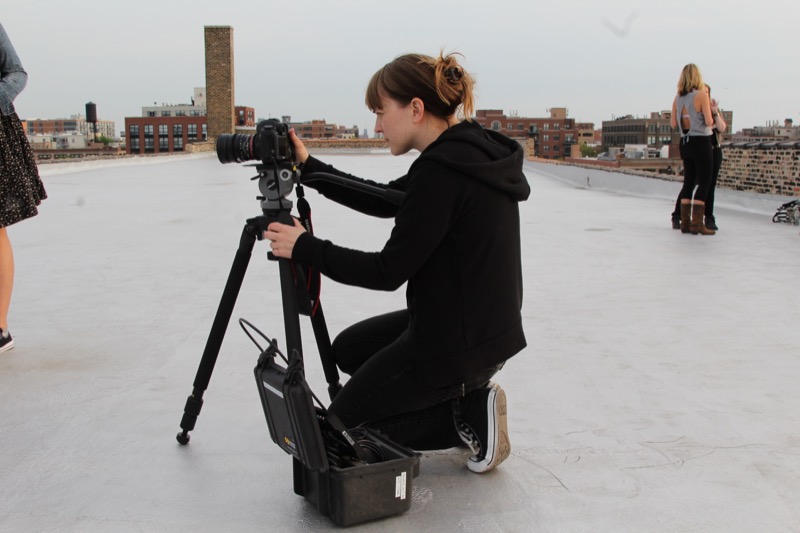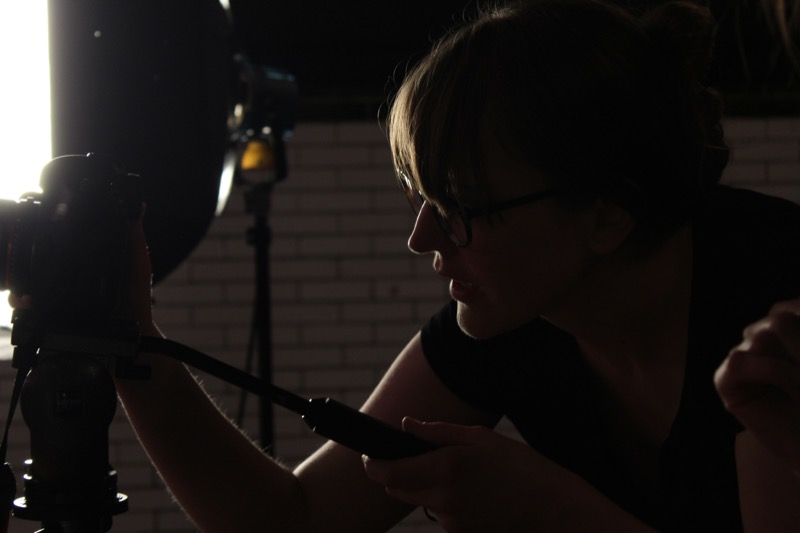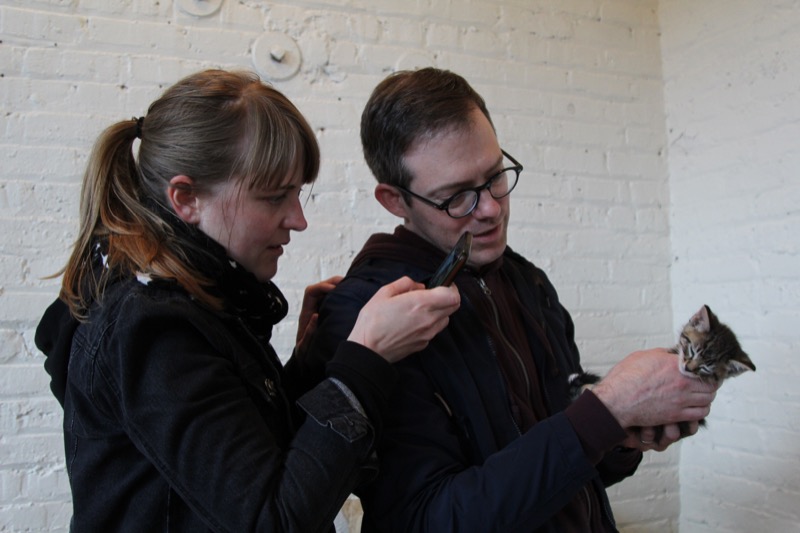MOVING About
One day, a few years ago, after watching Andrei Tarkovsky’s Stalker again (I teach scenes from it, so I review it pretty frequently), I thought more about the final scene than I ever had before. At the end of the 163 minute film, in which three adult men (a Stalker/guide, a writer and a professor) search for a place that will supposedly give them what they most desire, we see the Stalker’s daughter reading and then sliding glasses across a table with her telekinetic powers. I’m not going to dive deeply into a reading of the whole film here not only because such a discussion would take up too much bandwidth, but also because MOVING grew from looking at that final scene as an isolated event.

I was impressed with this youg girl, watching her read, take a break, and then calmly test out her powers. And with the exception of the nearby whining dog, she is all alone, demonstrating her powers only for herself.
At first, I simply wanted to shoot an updated version of this scene, but over time this idea grew into the desire to create different fictional scenes of the same length and simplicity, highlighting a variety of telekinetic actions. As I started to cast these roles in my mind, starting with performative friends like Lee Blalock and Lyra Hill, I found the fictionalizing of the scenes to be boring. I wanted the spaces and the movements to be true to the character, perhaps possible, and I wanted to get to know people through their choice of movement/object/scenario. I decided to shoot all real people playing themselves and grew to love the idea of collaborating with each one of them to envision what their telekinetic moment might be. I wanted to illuminating simple powers, or the small, everyday powers that symbolize or may eventually cause some kind of change. I wanted real people to reveal to me what their strength could be, as exemplified by what they move in the portrait and how. Finally, the support from the Chicago Digital Media Production Fund Grant, Voqal and Chicago Filmmakers provided me with the resources and encouragement I needed to approach people and shoot all twelve scenes.
Why twelve? I wanted to shoot a number of these portraits and I instantly saw them playing back in my mind in a grid. I knew I would have to bring it all together somehow and a linear compilation didn't excite me as much as simultaneity. I love the chaos and harmony of multiplicity and I love the act of sorting through it all as a viewer, letting your eye drift from image to image. It can be overwhelming, but I think you can also find little moments of solitude within it. It was important for this project to go beyond the idea of isolated scenes and to eventually create a chorus. Perhaps if we’re loud enough and there are enough of us, people can hear us? Even if we’re saying different things? Oh, and four videos across and three down fits computer monitors and screen fairly well.
Some of the subjects came to mind right away and others were recommended to me by friends and strangers after I put out a call for nominations. As the list of twelve started to form, it became increasingly important to me to get to know people better, to meet new people, to go to unfamiliar neighborhoods, and to learn more about everyone's ideas, careers, and philosophies. This project took my crew and I from Evanston to South Shore, from Pulaski to downtown, into colleges and bars, onto rooftops and into basement studios.
A side note on my crew: As I started to schedule the shoots, I decided to work with only women on my crew (with the exception of my husband who built the website and assisted me on the Jenny’s shoot, mainly because there were kittens present). I wanted to break old habits and challenge myself to give women the opportunity to collaborate, gain more experience, and get paid. Even if I barely made a dent in the much much larger problem of inequality on film sets, I ended up with a fantastic, collaborative crew who was up for any challenge. Each scene required a bit of improvisation, timing, experimentation, resourcefulness, and logic (some also requiring puppetry and extremely strong magnets).

The act of meeting and recording the subjects of these portraits was just as important as the videos we were going to make together. This realization spawned the inclusion of the interviews and behind-the-scenes photos. I knew that if I were viewing this project that I would want a hyper-linked experience offering me a chance to meet each subject, hear their voices and take a glimpse into the collaborative process. I also found great joy in the process of making this project and so I wanted to attempt to share it. There is such power in collaboration, play, asking questions, and listening. Telekinesis seemed less important as time went on. The practical effects were certainly fun to plan and arrange, but in the end, they amount to merely the appearance of power. I found the real power and the real magic in the mix of personalities coming together and learning from each other. It sounds corny, but it’s so true.
I believe in positive and productive energies.
I believe in movement on the smallest scale.
We can hold those energies within us and we can express them outwardly.
We can move people emotionally and we can move matter.
Sometimes we don’t have or need the words or the physical strength.
Sometimes we simply think, look or emanate...and something happens.
Perhaps MOVING provides a chance us to slow down, focus on our energy and ask ourselves how we might express or depict our power. What could we move and why? How simple can it be? How big? How every day? How fantastic? Who is it for? I still have a lot of questions and that's wonderful because asking them is my favorite thing to do.
Lori Felker, May 2016

MOVING was produced with a grant from the Chicago Digital Media Production Fund, a project of The Voqal Fund administered by Chicago Filmmakers.